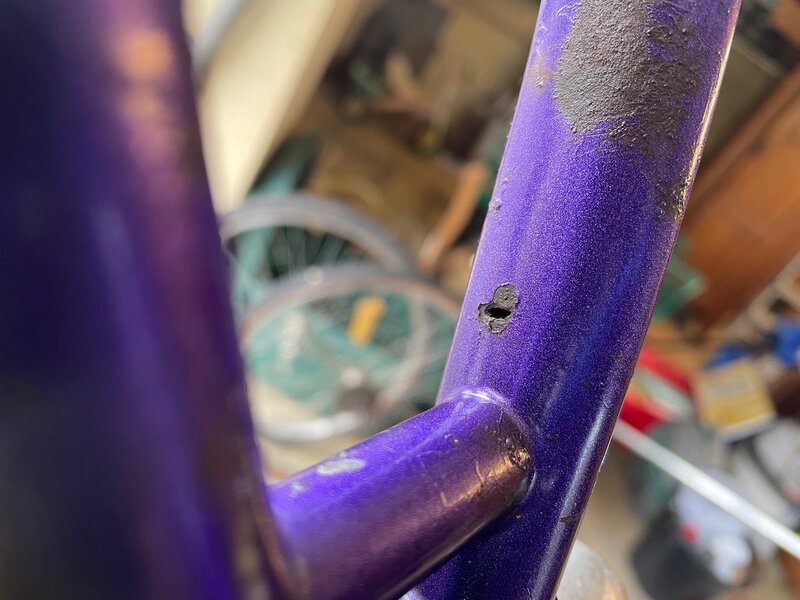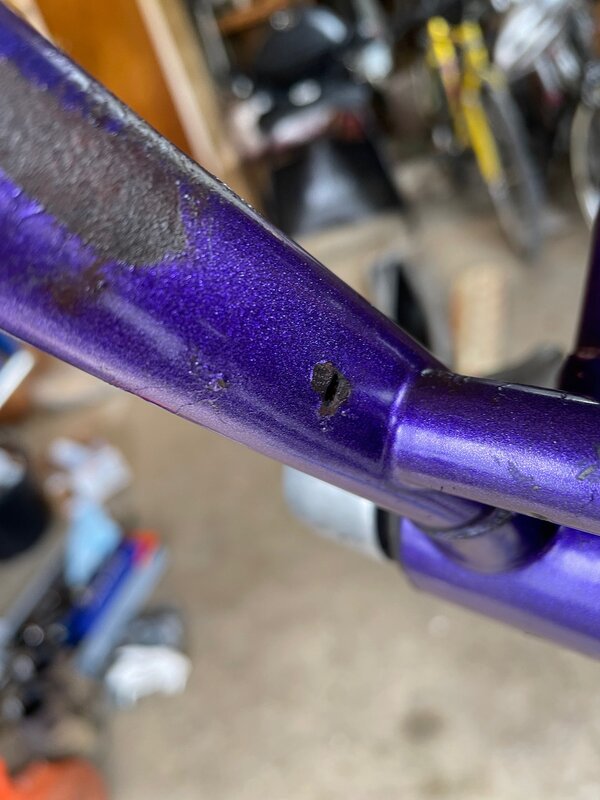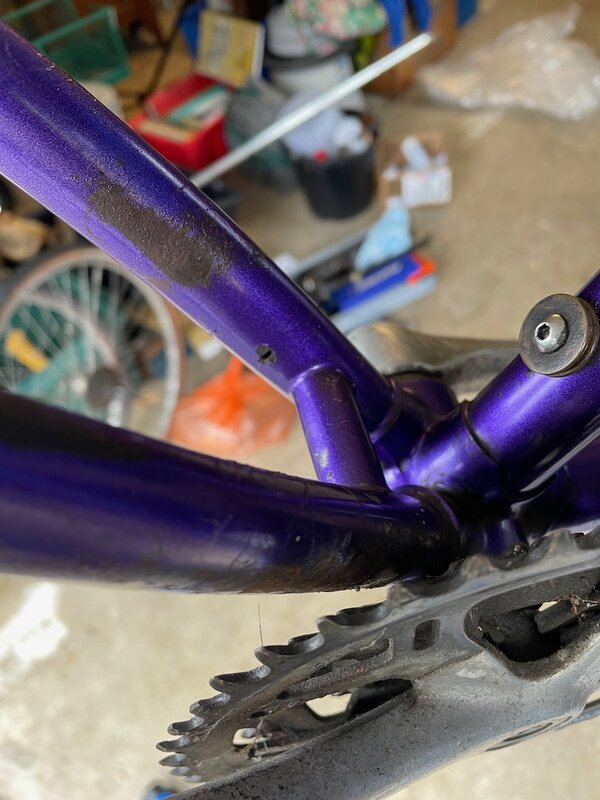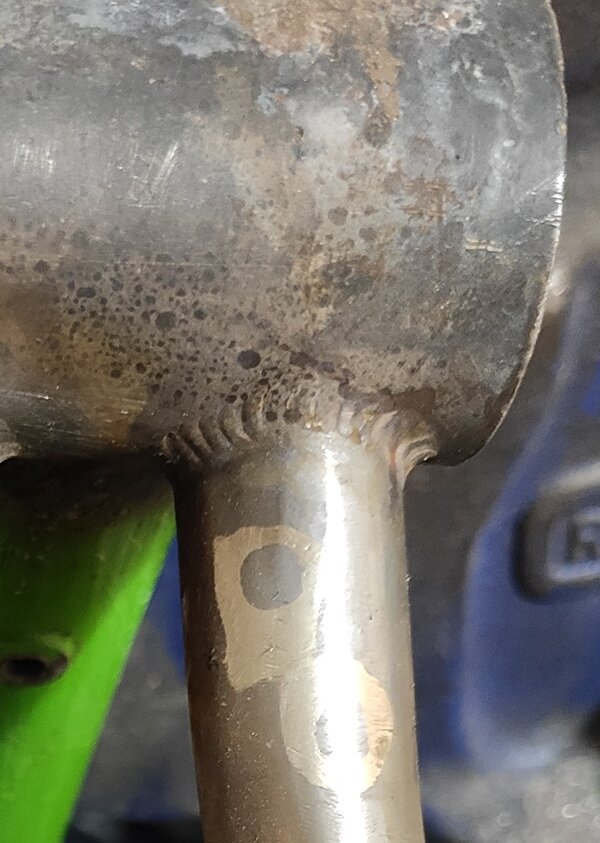Snippettysnip
Retro Newbie
Hi All,
I posted a couple of weeks back on my DY Diabolo project
I've stripped everything down apart from the cranks and BB (awaiting a loaner on the tools). Everything came apart nicely (thank you teenage me for using lots of grease) and is in surprisingly good nick, apart from... a small hole in the left hand chainstay. Looks like a rust hole, but the location is actually away from the main patch of corrosion from tyre rub.
Is this game over?! What is the expert opinion on this? Is it bad? Can it be fixed?
Thanks in advance.
I posted a couple of weeks back on my DY Diabolo project
I've stripped everything down apart from the cranks and BB (awaiting a loaner on the tools). Everything came apart nicely (thank you teenage me for using lots of grease) and is in surprisingly good nick, apart from... a small hole in the left hand chainstay. Looks like a rust hole, but the location is actually away from the main patch of corrosion from tyre rub.
Is this game over?! What is the expert opinion on this? Is it bad? Can it be fixed?
Thanks in advance.




